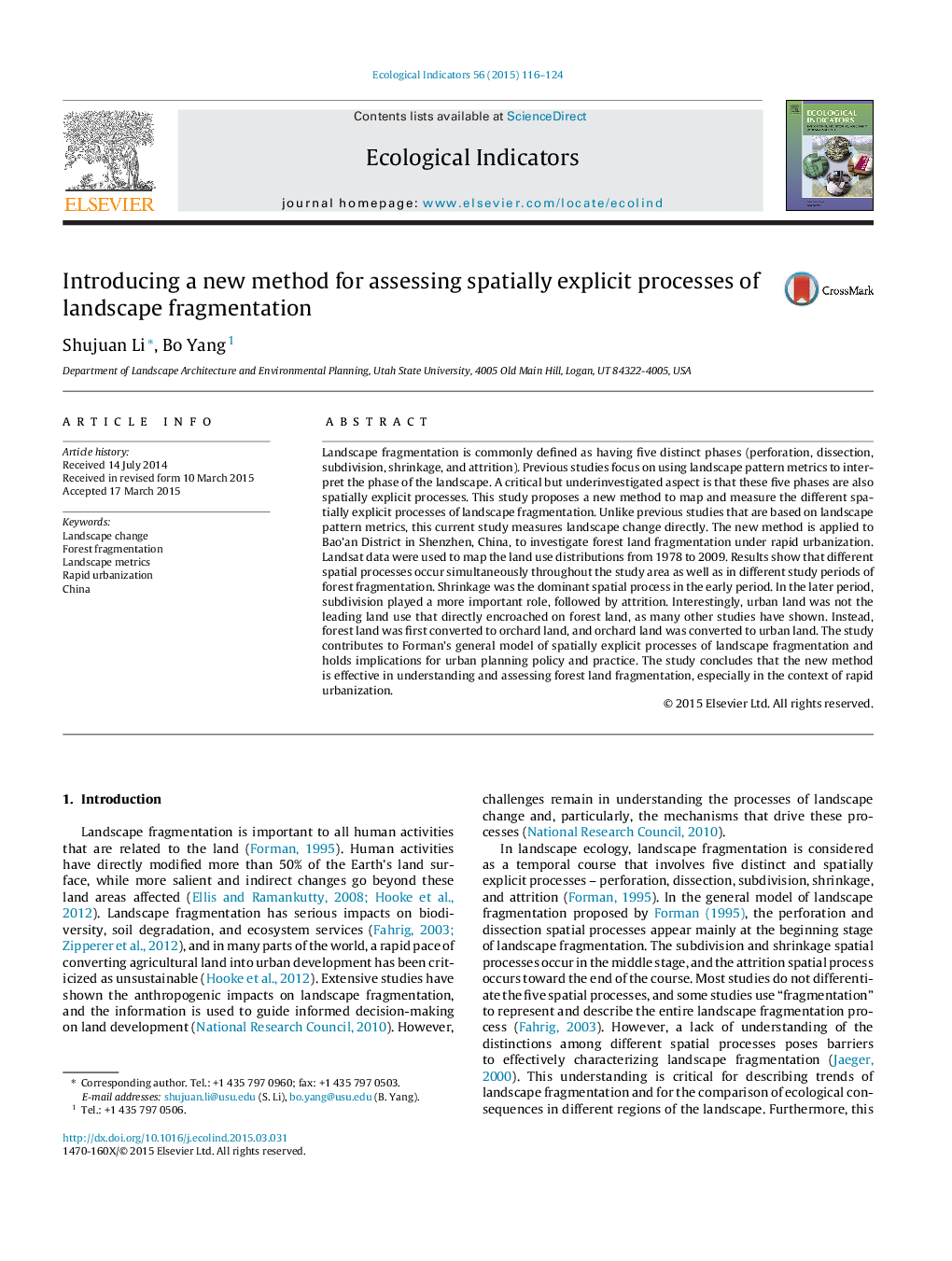| Article ID | Journal | Published Year | Pages | File Type |
|---|---|---|---|---|
| 6294339 | Ecological Indicators | 2015 | 9 Pages |
Abstract
Landscape fragmentation is commonly defined as having five distinct phases (perforation, dissection, subdivision, shrinkage, and attrition). Previous studies focus on using landscape pattern metrics to interpret the phase of the landscape. A critical but underinvestigated aspect is that these five phases are also spatially explicit processes. This study proposes a new method to map and measure the different spatially explicit processes of landscape fragmentation. Unlike previous studies that are based on landscape pattern metrics, this current study measures landscape change directly. The new method is applied to Bao'an District in Shenzhen, China, to investigate forest land fragmentation under rapid urbanization. Landsat data were used to map the land use distributions from 1978 to 2009. Results show that different spatial processes occur simultaneously throughout the study area as well as in different study periods of forest fragmentation. Shrinkage was the dominant spatial process in the early period. In the later period, subdivision played a more important role, followed by attrition. Interestingly, urban land was not the leading land use that directly encroached on forest land, as many other studies have shown. Instead, forest land was first converted to orchard land, and orchard land was converted to urban land. The study contributes to Forman's general model of spatially explicit processes of landscape fragmentation and holds implications for urban planning policy and practice. The study concludes that the new method is effective in understanding and assessing forest land fragmentation, especially in the context of rapid urbanization.
Related Topics
Life Sciences
Agricultural and Biological Sciences
Ecology, Evolution, Behavior and Systematics
Authors
Shujuan Li, Bo Yang,
